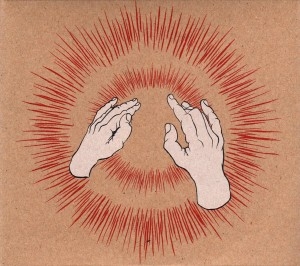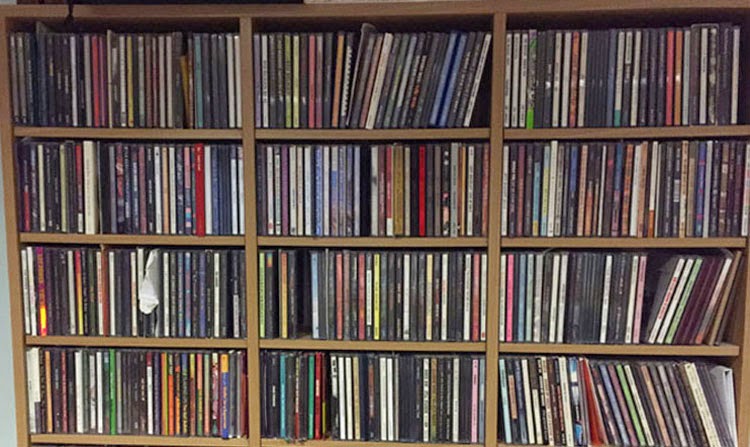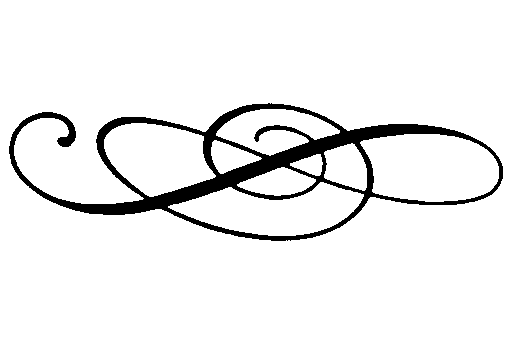

 Godspeed You! Black Emperor
Godspeed You! Black Emperor
| Release date | Label | Producer | Genre | Length | More info |
| 2000.09.12 | Kranky | Daryl Smith | Ambient Rock | 87:21 |  
 |
And they said Yes was "pretentious". Then again, maybe Heaven just loves symphony more than virtuosity.
Background
There are a lot of reasons why the term "post-rock" does not appeal to my senses, and most of all, maybe because it is impossible to draw a direct analogy between it and all the other "post-s", from Post-Impressionism to Post-Modernism. Those all represented antagonistic reactions - intentionally breaking with certain values of preceding schools of thought, often sending them up in a humorous or even cynical manner, and from that point of view, the real "post-rock" artist should probably be somebody like Ween. As for the actual bands that are usually placed under this label, beginning with Talk Talk and continuing with Bark Psychosis (for whom the term was invented in the first Place), Sigur Rós and our today's friends whom I will be calling GY!BE for short before the Internet runs out of free space - well, they were certainly doing their thing(s), and it was (were) relatively new thing(s) and all, but there's no more "negation" of values in these works than there was in Electric Light Orchestra covering ʻRoll Over Beethovenʼ (truly a "post-rock" track if there ever was one!). It was very much an idealistic movement, aimed at expanding and advancing the possibilities of rock band instrumentation, criss-crossing them with values of older classical works as well as more recent ambient ones - and where's the "post-" in that? Not to mention that psychedelic jamming, drone music, shoegazing, etc., had been on the scene for quite some time already, and nobody ever thought of them as "post-"anything, either. The term may have sounded nice at the time, just because any sort of art, to gain a legitimate history, eventually needs a "post-" of sorts, but it was misapplied.
I mean, if anything, these sprawling, hyper-ambitious works by GY!BE bring on associations with Mahler, and Mahler was a "modernist", not "post-modernist", so draw any conclusions you like from that one. I would personally suggest "ambient rock", or something like "symphonic-ambient rock" ("symphambient" for short, even if it kind of sounds like a good name for some strong drug - then again, for many people "post-rock" does act like a pretty strong drug!), and, naturally, GY!BE would be among the genre's torchbearers, and their commonly acknowledged masterpiece from the year 2000, which they are unlikely to transgress in the future, would be the ultimate "symphonic-ambient" panorama in four epic movements. While it did not exactly appear out of nowhere - GY!BE had already been perfecting their art for six years - it was unquestionably the first time when the Canadian collective had the opportunity and capacity to say everything it wanted to say, and say it precisely the way that they wanted to, which makes the album's reputation understandable. I remember very well myself how I was sent the record, lovingly burnt on CD-R, some time in the early 2000s by a music fan who set himself the tough goal of convincing cranky old (actually, young) me that there was still quite a bit of great, mind-bendingly innovative music being produced in our time, and included GY!BE among the specimens - so, obviously, there's no denying the impressive effect it made in its time, nor its lasting influence on subsequent generations of performers.
For sure, "post-rock" (aarrgh!) had already existed for some time: Bark Psychosis had come and gone, and Ágætis Byrjun, which may well have been influential on "mature period" GY!BE as well, had already caused the first wave of sensation. But the genre did not yet produce its Tales From Topographic Oceans, a sort of mega-statement that would cause people to sit up and go not just "ooh, what a Heavenly slice of beauty!", but rather "ooh, what a way to summarize all the mysteries of The Universe!" And with the recent tendency of "bands" to transform themselves into mini-orchestras not by means of extensive studio overdubbing, but by actually getting a lot of people to stay, play, record, and even tour together (a tendency that, among other people, would be inherited from GY!BE by fellow Canadians Arcade Fire), it was only a matter of time before somebody would get the gall to go for one's own "Symphony Of A Thousand" - well, in GY!BE's case, "Symphony Of Nine" would be more accurate, but add the appropriate decibel power and you can get a thousand-like effect if you really go for it. The result... well, like it or not, but the result was one of the most important albums of the year, whose repercussions would be heard loud and clear over the next decade.
Some basic factsThe album was originally conceived as a coherent and symbolist statement - improvised or not, it has a certain masterplan of which only vague hints are hiven by way of the track titles (and also the lengthy subtitles to individual sub-sections of each track, including such cryptic sequences as ʻCancer Towers On Holy Road Hi-Wayʼ and ʻEdgyeswingsetacidʼ) and album art (including a diagram of each of the four movements, personally written by Menuck and included in the vinyl edition of the record). Each of the movements occupies one side of vinyl (so the Topographic Oceans reference is at least formally spot on) and is supposed to be appreciated in its entirety, although the album as a whole, I believe, may be cut up into four distinct listening experiences stretched over four days - in fact, this would probably be the right way to soak it in at first, rather than let you get lost and confused in its no-ship-on-the-horizon ambient infinity. But, in any case, there's no direct, unambiguous meaning to any of the musical parts, and it's all open to interpretation.
Upon release, the album got almost nothing but positive reviews; however, due to the enigmatic and attention-demanding nature of the music, critical success was not enough to turn the band into a viable commercial proposition, and even after their relatively recent reunion (by which time the legend had enough time to take root, mature, and stabilize) album sales continue to be rather low - not that, honestly, anything else could be expected from a band that specializes in 20-minute long droning instrumentals, no matter how inventive, unique, or emotionally shattering they might be. (Which does make it fun to compare them with Arcade Fire, who have always had an instrumentally comparable lineup, but who also, from the very start, were setting their minds on the pop format in order to, quite intentionally, break on through to a large audience to spread the good word. Kind of makes GY!BE's achievement all the more amazing, because it takes far more guts to hold together a large bunch of people with no initial hopes of commercial success than a bunch of people who could at least hope to become a household name some day).
For the defense
One ugly reservation that I always hold against post-r..., uh, symphonic-ambient bands is the nagging suspicion that, you know, they really play like this just because they can't really play their instruments all too well, and so they mask their lack of technical skill through sheer numbers: number of people in the band, number of decibels collectively produced by all the instruments, number of minutes it takes them to finish, etc. etc. Then I have to remind myself that the reason why Keith Richards is (or, at least, was) such a cool guitar player is because he couldn't play the guitar all too well, and the argument subsides. It is probably true that no sub-section of GY!BE could ever properly cover a Rush or even a Talking Heads tune if they were pressed to, but that is not the point. The point is: when they get together, all nine of them (eleven if you throw in the mysterious Alfons and Brian on horns) - is it actually worth getting together? Is there a certain "band-of-angels" feel emanating from these tracks, or does it all seem like primitive and/or puffed-up sonic nonsense?
On the whole, I think, the answer is an overwhelming yes. I will not deny that chunks (even large chunks) of the record tend to lose my attention every once in a while, but then again, so do large chunks of Mahler symphonies, where some parts often act, almost intentionally, as catch-your-breath interludes where you are allowed, by the composer himself, to let your mind freely roam for a while before it is thrown and stunned once more by the next onslaught. The entire record has an intelligent flow - from the first and most "regal" crescendos of ʻStormʼ to the dirge-like and catacomb-like sounds of ʻStaticʼ to the howling nightmare ghosts of ʻSleepʼ and, finally, the somewhat anti-climactic (but probably intentionally so) mix of romanticism and noise psychedelia on ʻAntennas To Heavenʼ. You could construe it as anything: a multi-stage journey through various phases of enlightenment, a soundtrack to an imaginary documentary on the private and public life of Gandalf the Grey, a set of impressionistic musical comments on a set of paintings in an art gallery, but there's a sense of unity to all four pieces that means more than just being played by the same people. We do have a symphony here, with an expected alternation of tempos, moods, and purposes all working towards the same goal, and it is your own, wholly subjective, job to try and figure out what that goal might be.
To increase the sense of "seriousness", GY!BE often use sampled voiceover passages that are quite "pretentious" all by themselves - an impassioned sermon in ʻStaticʼ, an old codger's nostalgic reminiscences about the former beauty of Coney Island in ʻSleepʼ, a somewhat sadistic folk song at the beginning of ʻAntennasʼ - none of which seem to be of particular importance individually, but collectively they serve to reinforce the very feeling of importance: Religion, Memory, and Folklore are all invited to come together and cast their blessing on the music. So if the music did not qualify, it would all be one heck of an embarrassment; and if you are used to short and concise pop songs, or even to complex "progressive" epics with lots of dynamic surges, rousing tempos and twisted time signatures, as your default style for enjoying music, it might be very easy to get the impression that the music absolutely does not qualify. But it does. To continue the classical analogy, even while "form-wise" the closest analogy is an 80-minute Mahler symphony, "substance-wise" this is rather the symph-ambient equivalent of what could happen if a Debussy or a Ravel would want to come up with a Mahler-like 80-minute symphony. (Most likely, a thing like that would get very mixed responses - but then, top critical assessments aside, so do GY!BE).
The top trick of the band is the trademark GY!BE crescendo, the art of which they had mastered to near-perfection on this album and would never again top on any subsequent releases. On the opening track, ʻStormʼ, there's two of them: first, a six-minute "triumphant" one, as if announcing the arrival of some royalty (God of Art?) on the scene, and then comes the second, "stormy" one, with a distorted echoey guitar rising high above the other instruments and the whole thing eventually speeding up into a mad gallop. But the individual instrumental parts, even when they are playing a pretty melody (and quite often they are - in between all the droney pretty melodies on here, they've pretty much written the blueprints for the entire career of Beach House), are denied serious meaning: it is only the build-up that counts, the way additional instruments are slowly and meticulously piled up and up and up and all the different guitar and string drones are woven into a single complex pattern and then the drums and horns give them extra muscle and... well, might as well regard this as a metaphor for the Emergence and Evolution of Life Itself, from the first living cell and all the way up to Homo Sapiens, though, as I've said, there can be any number of possible symbolic interpretations here.
The most powerful crescendo on the album, however, is ʻSleepʼ (the ʻMonheimʼ section), where everything is taking place around one incredibly sad looped riff played on... well, I actually have no idea what the instrument is before the drums kick in and the tempo speeds up. A specially treated guitar sounding like a musical saw? Whatever, the track makes perfect local sense coming off the old man's rant about the faded glories of Coney Island, as if it were some sort of lonesome spin on an abandoned Ferris wheel, going slowly round and round until, at about 9:20 into the track, some devilish force grips it and sends it into a much faster spin - accelerating, accelerating, until the mad force rips it out of the foundation and just sends it spinning into outer space, with detached flaming bits and pieces hitting the ground. This is a prime example of the magic touch these guys have: the main melody is simple and monotonous, but they can bind you to your seat for about ten minutes with it, just by adding here and subtracting there and playing with the volume level and the constantly changing role of different instruments in the mix.
By the time the album is over - if you managed to take it all in one go - you might not be exactly certain what it is that you have just experienced, but there will be a feeling of epic "monumentality" that no Sigur Rós album can provide (not that it tries to). It might not be a complete compendium of the human emotional spectrum, but, actually, it does not pretend to be human. Very clearly, to me at least, it pretends to be an approximation of Godly Music - you know, of the Valar, of the Olympian Gods, whatever; sounds produced by the Gods, consciously or subconsciously, as they initiate, witness, or remember some important processes of the Universe. Nobody sings; nobody really "plays", more like "spins" the music like the Moirai spin their threads. Who knows, maybe they just spun your personal thread somewhere in there, too. Could take a couple hundred extra listens to find it in the haystack.
For the prosecution
Well, complaining about the songs not being catchy would be by far the stupidest accusation one could fling against the album - (a) because this style is not supposed to be catchy and (b) because these melodies are repeated so many times over, they're all catchy anyway. What bothers me more is that those parts of the record that are not crescendos often tend to lose my attention and dissipate the accumulated effect. The last chunk of ʻStaticʼ, for instance, completely passes me by (the one that is dominated by bass rumbles and industrial percussion - not tremendously original), but the biggest disappointment is the last track, where, at the end, you sort of expect an arch-monumental conclusion and instead get a few minutes of minimalistic electronics that sound like a deconstructed fugue for digital organ in a bombed out cathedral. (Okay, that description now reads more cool to me than the actual sonic part). A bit anti-climactic for me, but what I really want to say is, if what you get is an 80-minute long record full of repetitive droning, you can hardly expect it to be a non-stop musical orgasm all the way through. Sometimes they need to, you know, take their time and perform certain routine actions to get it up again.
More problematic is the issue of ambition: the record almost literally insists that you take it very, very seriously - I mean, Yes and ELP are practically painted clowns next to the religious fervor of Efrim Menuck's gang, and I am not sure if I completely subscribe to this. What bugs me quite a bit is that the album is, indeed, monumental, but it is rarely intimate: individual instruments are not properly permitted to speak out against others, and even if they start quiet and sensitive, everything is eventually drowned in loudness: their strength and weakness at the same time, as if they were a Pink Floyd that never allowed itself to move past the ʻCareful With That Axe, Eugeneʼ phase. Lots of gorgeous soundscapes here, yes, and yet, not a single one that would actually grip my heart tightly and wring out some tears, even abstract ones, you know, for the sake of all humanity or whatever. (This, by the way, is where the Mahler analogy fails completely, and you'd do better to seek a new one, maybe with something like Renaissance choral oratorios or Baroque cantatas). I guess that the skinny fists in question are lifted like antennas to Heaven, and that the signal is properly received, but maybe there's simply too much Heaven and not enough of those skinny fists in the record to make me fall in genuine love with it, rather than be awed by its presence.
Conclusion
| Melody | Voice | Mood | Production | Innovation/Influence | Where it belongs | RYM preference | |
 |
× |  |
 |
 |
 |
#24 (Jun 12, 2016) |

| Previous entry | Main page | Next entry |